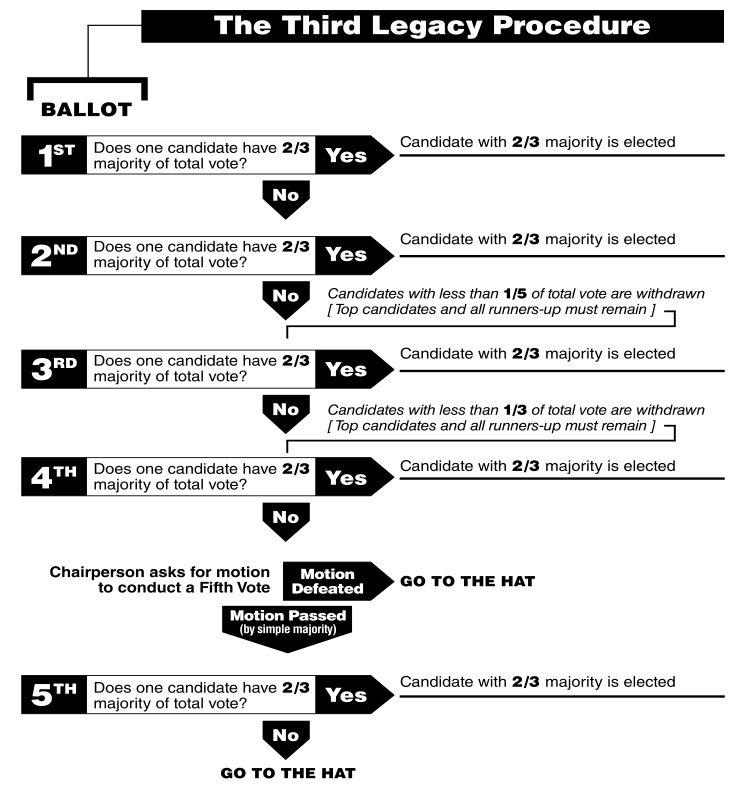A.A.’s Third Legacy Procedure is a special type of electoral procedure, used primarily for the election of delegates and regional and at-large trustees. It is considered to be unique to A.A., and at first glance, appears to introduce a strong element of chance into a matter that should depend solely on the judgment of the majority. In practice, however, it has proved highly successful in eliminating the influence of factions or parties that seem to thrive on most political scenes. The railroading of a candidate for election is made difficult, if not impossible, since voters have a wide selection of candidates to choose from. More importantly, a second-place candidate who may be extremely well qualified but without early popular support is encouraged to stay in the balloting rather than withdraw.
Third Legacy Procedure is as follows:
- The names of eligible candidates are posted on a board. All voting members (of the area or Conference body) cast written ballots, one choice to a ballot. The tally for each candidate is posted on the board.
- The first candidate to receive two-thirds of the total vote is elected.
- Withdrawals start after the second ballot. If any candidate has less than one-fifth of the total vote, his or her name is automatically withdrawn — except that the top two candidates must remain. (In case of ties for second place, the top candidate and all tied runners-up remain as candidates.)
- After the third ballot, candidates with less than one-third of the total vote will be withdrawn automatically, except the two top candidates remain. (In case there are ties for second place, the top candidate and all tied runners-up remain as candidates.)
- After the fourth ballot, if no candidate has two-thirds of the total vote, the candidate with the smallest total is automatically withdrawn, except that the top two candidates remain. In case there are ties for second place, the top candidate and all tied second-place candidates remain.
- At this point, the chairperson asks for a motion, second, and a simple majority of hands on conducting a fifth and final ballot.
- If this motion is defeated, balloting is over and the choice is made by lot—“going to the hat”—immediately.
- If the motion carries, a fifth and final ballot is conducted.
- If after the fifth ballot no election occurs, the chairperson announces that the choice will be made by lot (from the hat). At this point, the top two candidates remain. In case there are ties for first place, all tied first place candidates remain. In case there are no ties for first place, the top candidate and any tied second-place candidates remain.
- Lots are then drawn by the teller, and the first one “out of the hat” is the delegate (or trustee or other officer).


